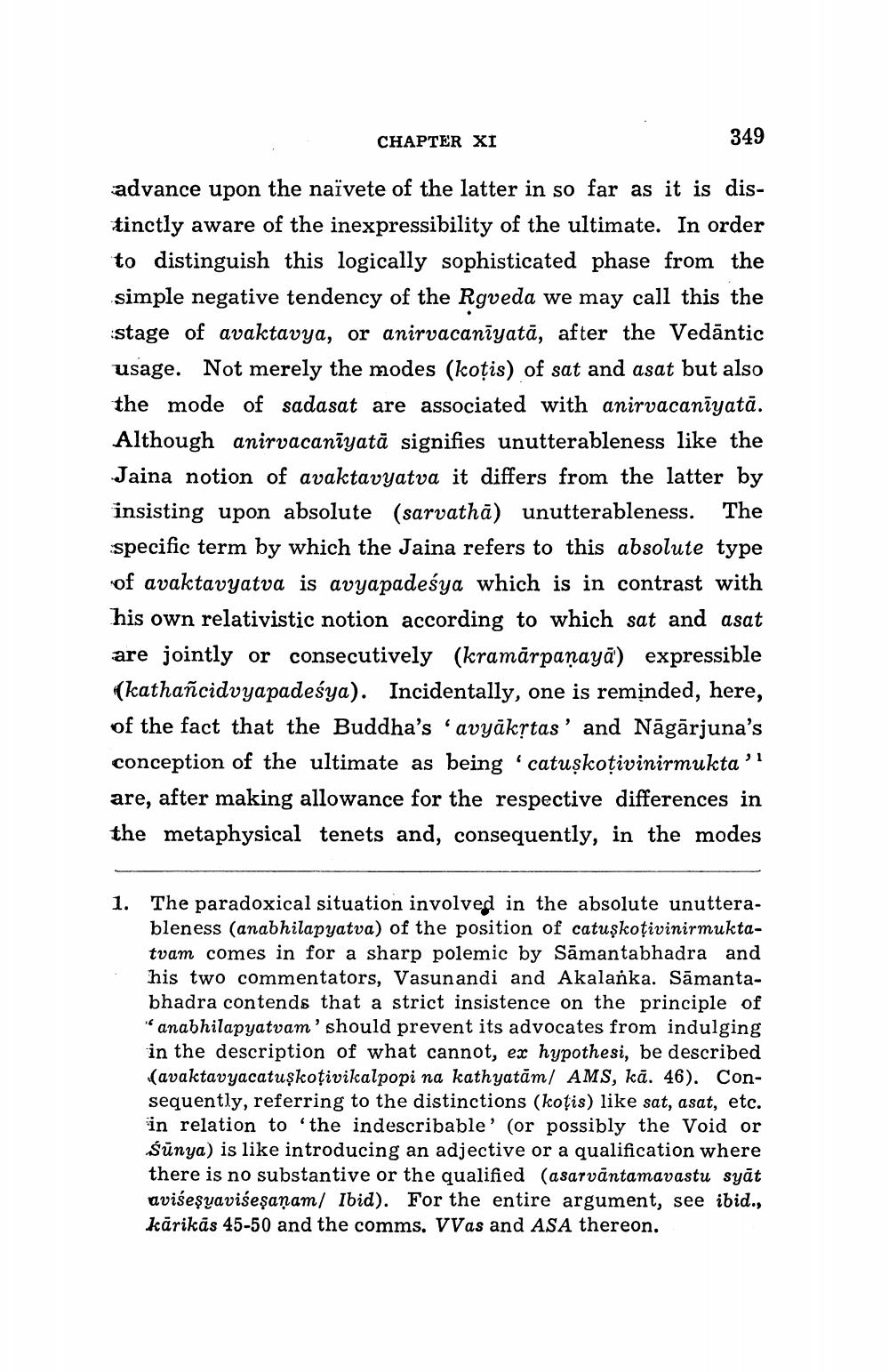________________
CHAPTER XI
349
advance upon the naïvete of the latter in so far as it is distinctly aware of the inexpressibility of the ultimate. In order to distinguish this logically sophisticated phase from the simple negative tendency of the Rgveda we may call this the stage of avaktavya, or anirvacaniyată, after the Vedantic usage. Not merely the modes (kotis) of sat and asat but also the mode of sadasat are associated with anirvacaniyatā. Although anirvacaniyatā signifies unutterableness like the Jaina notion of avaktavyatva it differs from the latter by insisting upon absolute (sarvatha) unutterableness. The specific term by which the Jaina refers to this absolute type of avaktavyatva is avyapadesya which is in contrast with his own relativistic notion according to which sat and asat are jointly or consecutively (kramārpaṇayā) expressible (kathañcidvyapadesya). Incidentally, one is reminded, here, of the fact that the Buddha's 'avyākṛtas' and Nāgārjuna's conception of the ultimate as being 'catuskoṭivinirmukta are, after making allowance for the respective differences in the metaphysical tenets and, consequently, in the modes
31
1. The paradoxical situation involved in the absolute unutterableness (anabhilapyatva) of the position of catuşkotivinirmuktatvam comes in for a sharp polemic by Samantabhadra and his two commentators, Vasunandi and Akalanka. Samantabhadra contends that a strict insistence on the principle of "anabhilapyatvam' should prevent its advocates from indulging in the description of what cannot, ex hypothesi, be described (avaktavyacatuşkoṭivikalpopi na kathyatām/ AMS, kā. 46). Consequently, referring to the distinctions (kotis) like sat, asat, etc. in relation to 'the indescribable' (or possibly the Void or Śūnya) is like introducing an adjective or a qualification where there is no substantive or the qualified (asarvāntamavastu syāt aviśeşyaviseṣaṇam/ Ibid). For the entire argument, see ibid., kärikäs 45-50 and the comms. VVas and ASA thereon.




